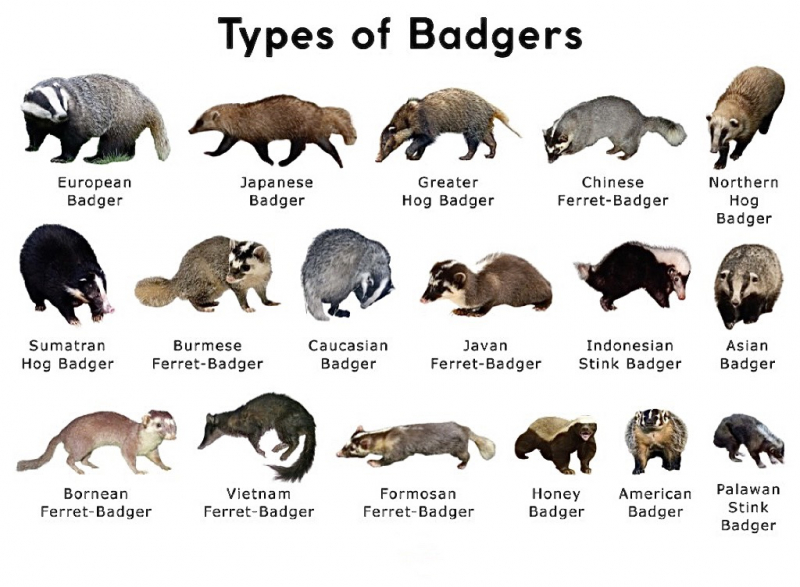There are 15 species of Badgers
Badgers are omnivorous short-legged members of the Mustelidae family (which also includes the otters, wolverines, martens, minks, polecats, weasels, and ferrets). The squat bodies and adaptations for fossorial behavior of badgers, which are polyphyletic rather than a natural taxonomic grouping, are what bind them together. All are carnivoran animals and are members of the caniform suborder. The fifteen species of mustelid badgers are divided into four subfamilies: the honey badger or ratel Mellivorinae (genus Mellivora), the American badger Taxideinae, the five species of Helictidinae (genus Melogale) or ferret-badgers, and the four species of Melinae (genera Meles and Arctonyx) that include the European badger (genus Taxidae).
These are 15 different species of badgers, which may be found on every continent except Australia, Antarctica, and South America. The Chinese ferret badger is the smallest while the European or Eurasian badger is the largest. The only badger species indigenous to North America is the American badger, which may be found in the Great Plains, the western United States, and certain regions of Canada and Mexico. Although badgers are most frequently associated with their striped faces and large bodies, not all badgers are the same. The tiniest badgers have narrow bodies and are more like weasels, whilst the larger ones have stocky bodies and short legs.








